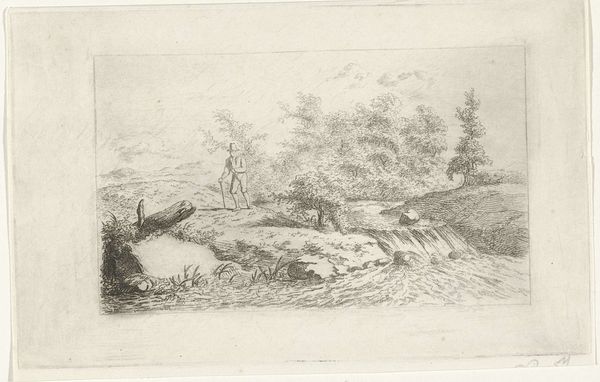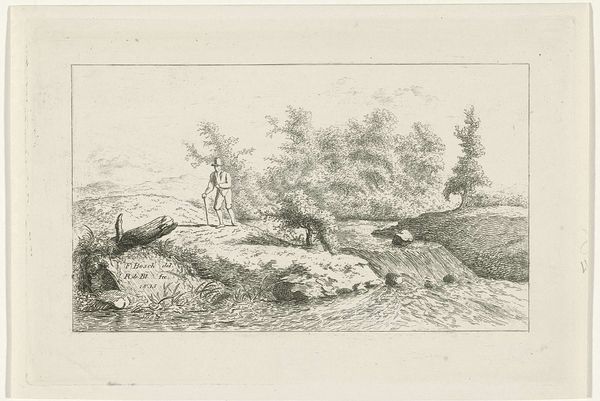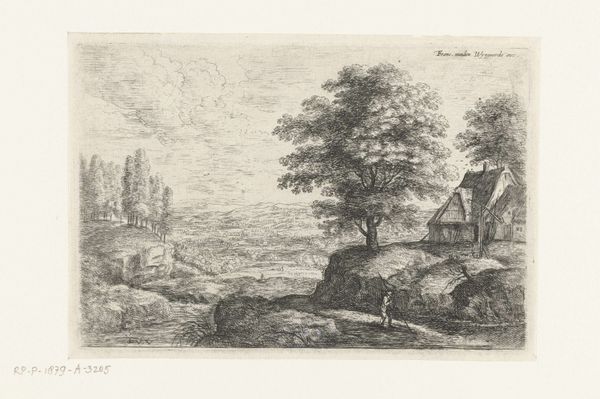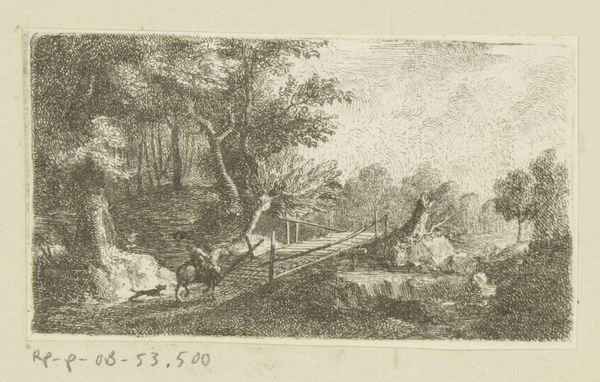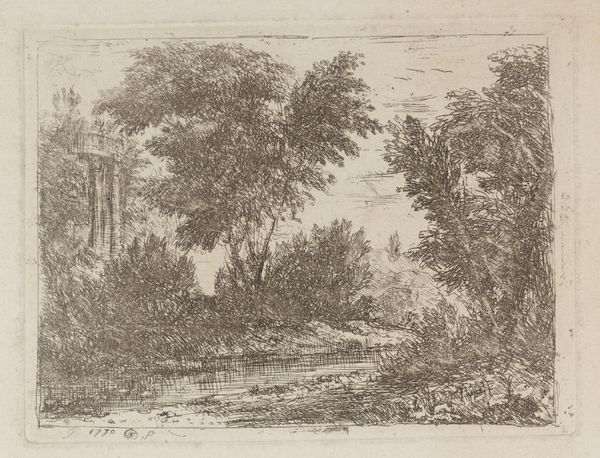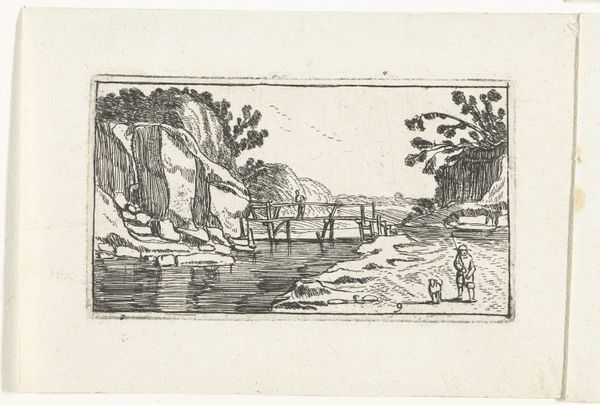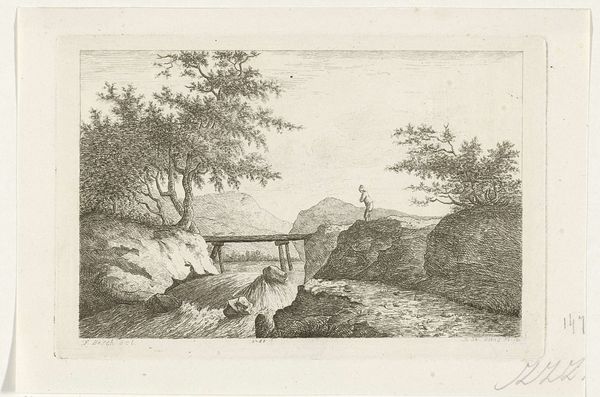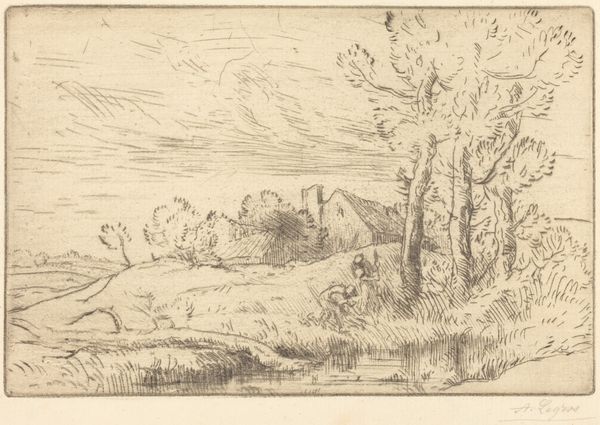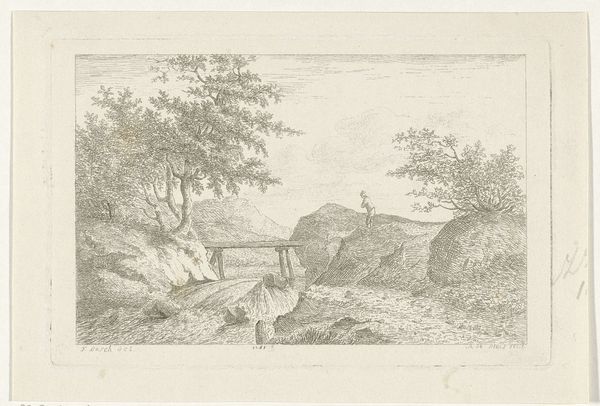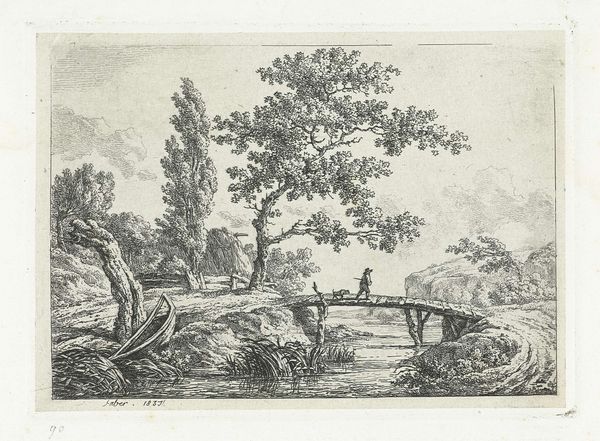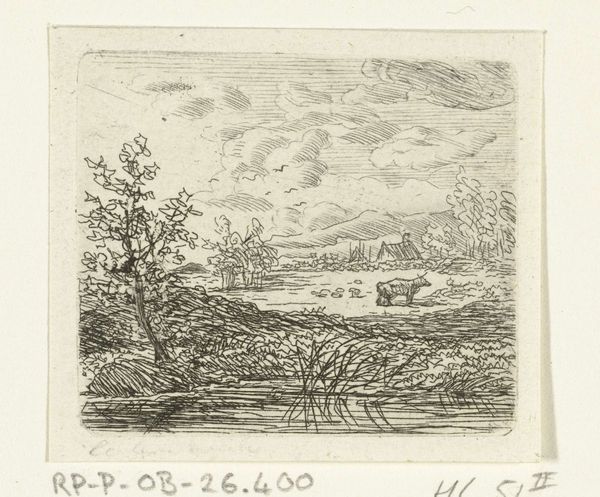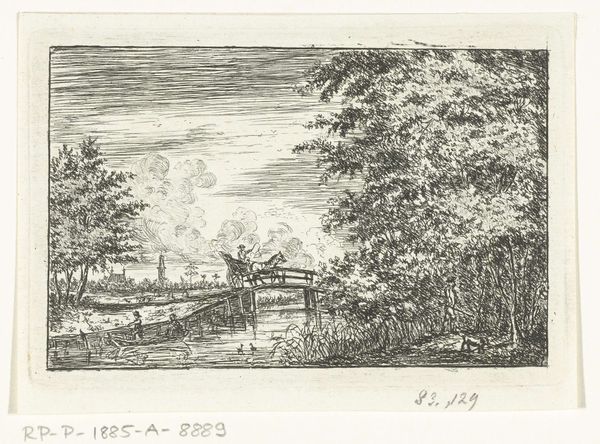
print, etching
# print
#
etching
#
landscape
#
romanticism
#
line
Dimensions: height 36 mm, width 90 mm
Copyright: Rijks Museum: Open Domain
Editor: Here we have Ernst Willem Jan Bagelaar's "Rocky Landscape with Natural Bridge," an etching made sometime between 1798 and 1837. I’m really drawn to the detail he achieved with such a delicate medium; the scene feels both vast and intimate. What do you see in this print? Curator: What strikes me is how this etching, a *reproducible* medium, democratized access to landscape imagery during the Romantic era. Consider the means of production – the acid biting into the metal plate, the physical labor involved in printing… it’s all a form of material transformation, creating copies accessible to a broader public. What kind of consumption do you think these landscape prints encouraged? Editor: Hmm, maybe a desire for people to travel and experience nature firsthand, or perhaps just to appreciate its beauty within their own homes, sort of like a status symbol? The lines are incredible here. Does the fact that this print democratized art make it less Romantic, somehow? Curator: Not at all! Think about the materials and labor that went into creating even "original" paintings. Romanticism, in this context, isn't just about individual genius; it's about the relationship between the artist, the means of production, and the emerging market for art. The accessibility granted by prints helped fuel the desire for landscape art and perhaps, influenced artists to consider the commercial value of their art. How does understanding this piece as a commodity change how we view its aesthetic qualities? Editor: That’s a perspective I hadn’t considered! So, it's not just about Bagelaar's artistic skill or vision, but also about the printmaking industry and how it shaped artistic creation and consumption? Curator: Precisely. Seeing it in terms of materials, processes, and markets reveals how deeply art is intertwined with social and economic forces. Editor: This really challenges the way I initially perceived the piece. I was so focused on the image itself. Thanks!
Comments
No comments
Be the first to comment and join the conversation on the ultimate creative platform.

